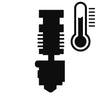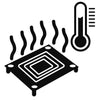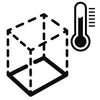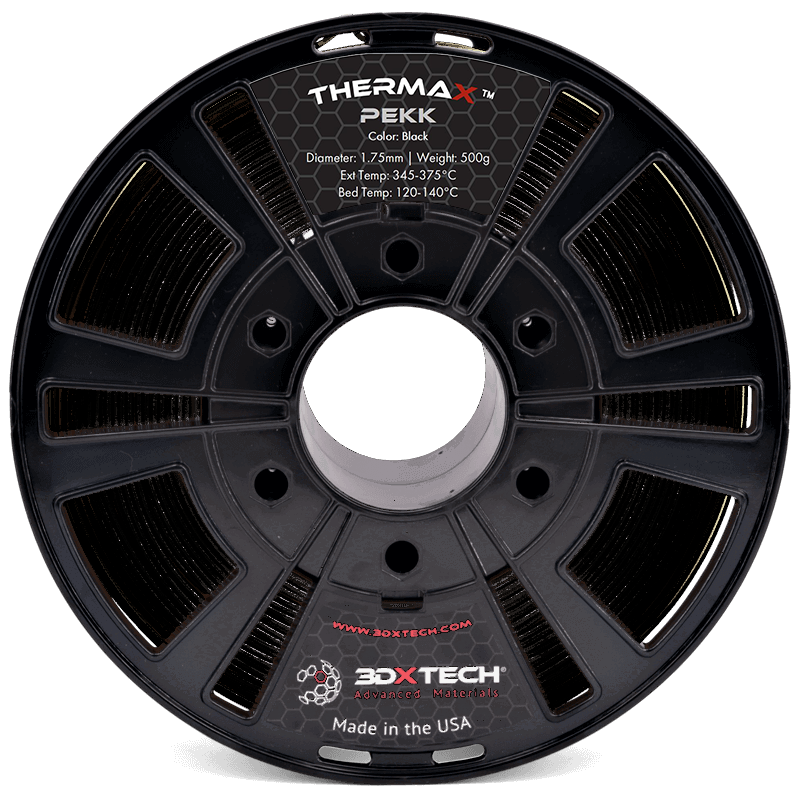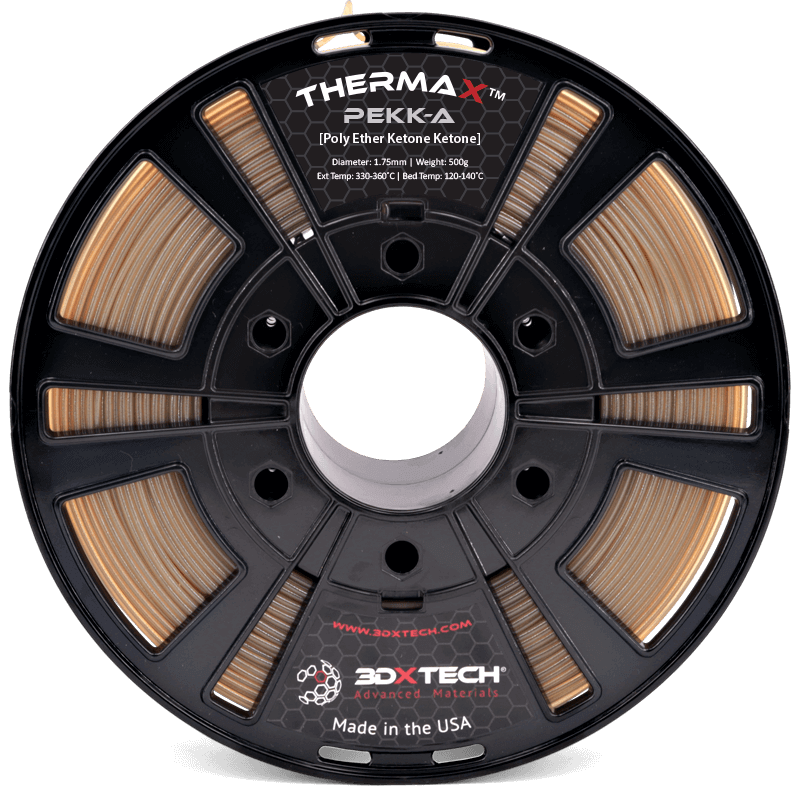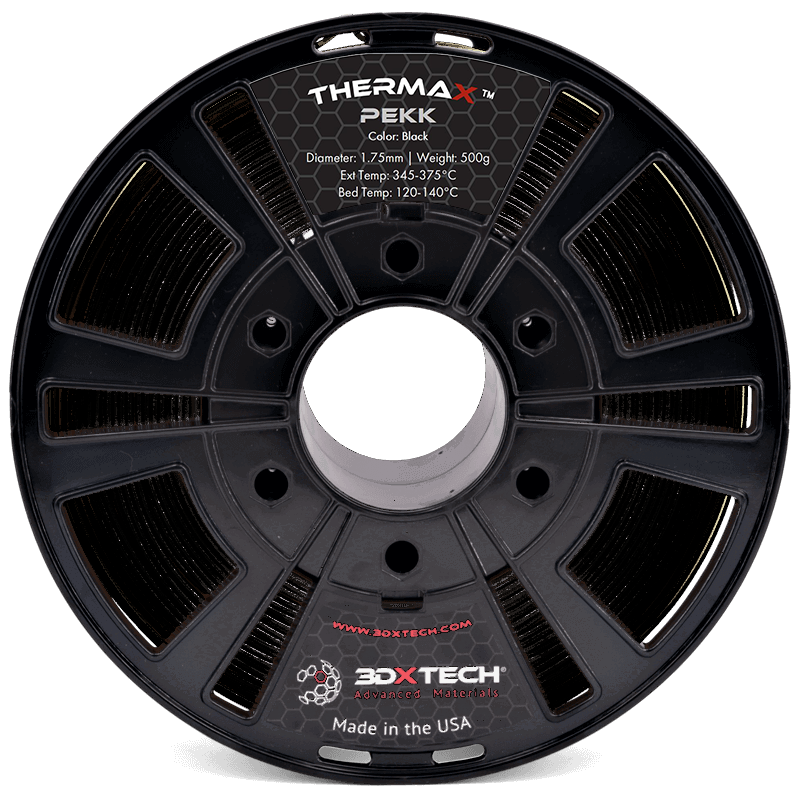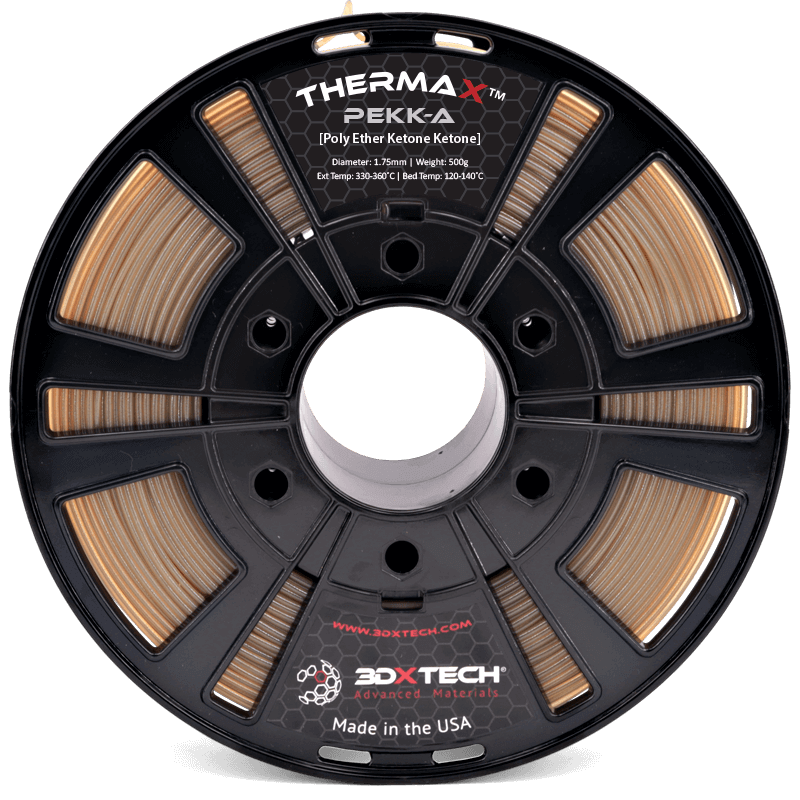THERMAX PEKK A
ThermaX PEKK (PolyEtherKetoneKetone) is made using Arkema Kepstan PEKK and is one of the highest-performance polymers in plastics business. A leading material in the PAEK family, PEKK has exceptionally good mechanical, thermal, and chemical resistance properties. It is also not only substantially easier to print than PEEK, it’s one of the easiest ultra-polymers to 3D print period. Developed in partnership with Arkema, a leading supplier of ultra-performance materials.
MADE IN THE USA
We manufacture all of our filaments in our 68,000 ft² manufacturing facility (located in Grand Rapids, Michigan) using state-of-the-art equipment and processes. Our goal continues to be to make the most innovative filaments on the market – targeting difficult end-use applications.

Print Recommendations
